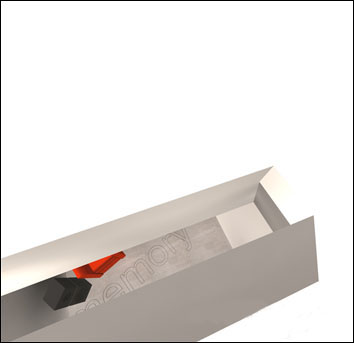The Monarch; A Butterfly's Odyssey.
 all photos: September 2007 / Montreal, Qc / Canon EOS Digital Rebel XTi.
all photos: September 2007 / Montreal, Qc / Canon EOS Digital Rebel XTi.Last week, we were lucky enough to have witnessed the release of the second generation of Monarchs, at the Botanical Garden of Montreal. These fascinating North American Butterflies are especially noted for their lengthy annual migration; they make massive southward migrations starting in August until the first frost, and then a northward migration starting spring - an incredible yet perilous journey of more than 4.000km in total [from Canada to Mexico].
Female Monarchs deposit eggs for the next generation during these migrations. It takes several generations to complete one journey, and scientists are still trying to figure out how a Monarch Butterfly can find its way along the migration route, if it had never been there in the first place. The normal lifespan of a Monarch is less than 2 months for butterflies born in early summer. The Last generation of Monarchs born towards the end of the summer, enters in a non-reproductive phase (diapause) and can live longer, up to 7 months. During diapause, these butterflies "overwinter" and usually do not reach sexual maturity until it gets warm, and only then, they can reproduce (a butterfly that can have sex, lives a lot less than a non-sexual butterfly). The generation that "overwinters" can reach as far north as Texas or Oklahoma during spring migration; only the second, third and even fourth generation of Monarchs reaches Northern USA, and Canada sometime in spring.
Monarch Butterflies can also make transatlantic voyages to Bermuda, and southwest of Great Britain. They have also been noted in New Zealand during warm seasons.
These orange & black butterflies are one of the few insects that allow themselves to chill and fly carefree in our skies. They are able to do so, because as beautiful and colorful as they are, they taste very bad. Predators (birds), after having a tasting of one Monarch will have cramps, stomachaches, and will most likely vomit. They will remember this bad taste and associate it with the color of the butterfly. They will never attempt to attack it again.
Monarch Butterflies nest in one special plant called Asclepiade (or milkweed). Unfortunately this plant is considered a "bad herb" and is, most of the time, removed from our gardens and lawns. I urge you my friends, if you happen to identify the Asclepiade in your garden, do not remove it for it will most likely become a substation for these gorgeous butterflies; an oasis where they can rest... and get busy!
You can also buy a kit for breeding Monarchs, with tags and all. You breed it, tag it, release it, and contribute in better understanding the behavior of this fascinating Butterfly.
Labels: fascinating world, monarch butterfly, Montréal, photography

5 Comments:
cool :)
Mr Discovery channel, thanks to you am gonna sleep un peu moin ignorant ce soir :D
Seriously: i think that you are lucky to enjoy such a natural phenomena! Shou na2esna bi lebnen??
BTW, you seem to be skilled with photography, is the EOS yours?
As an amateur a.k.a MMMMMMMMMoi, do i need something more powerful than a sony cybershot?
waynak ya khouya???
I have several flying around this island of mine, actually surprisingly many.
Post a Comment
<< Home